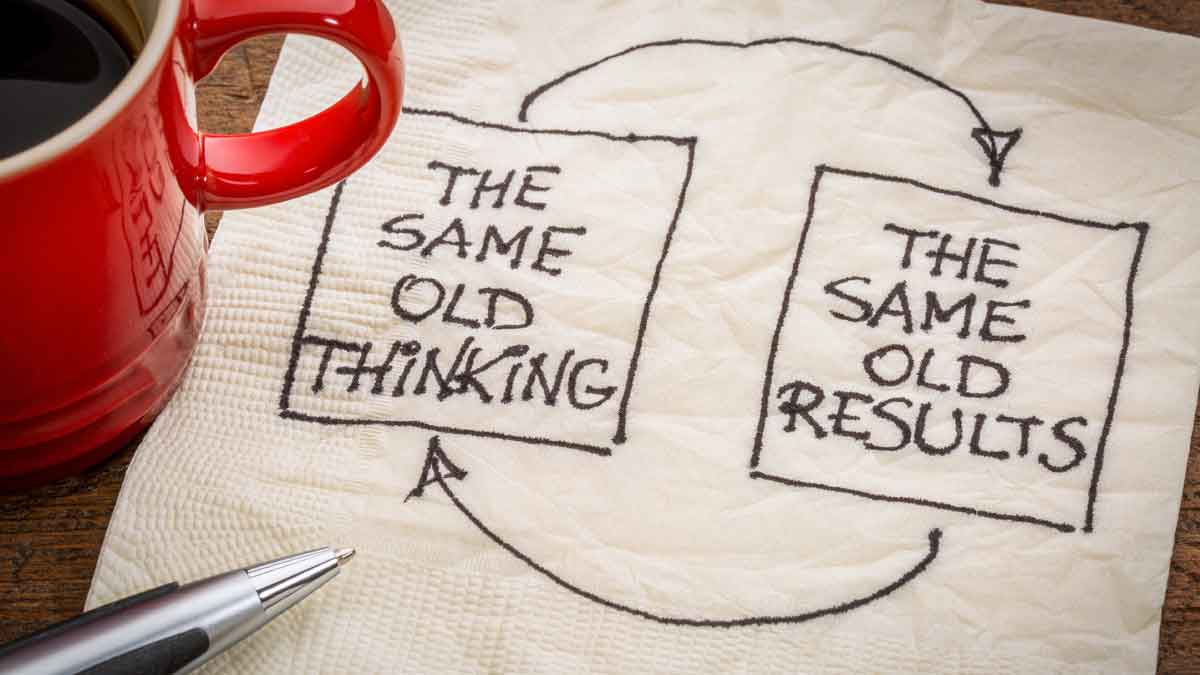A new product development process with stages and gates provides helpful discipline. But most suffer from two limitations: 1) Internal focus… talking to ourselves instead of customers. 2) Analytical thinking… promoting a checklist mentality. You also need discovery thinking, with a focus on learning. Unlike analytical thinking, this is fragile and must be nurtured.
More in article, Should Your Stage-Gate® Get a No-Go?
In both cases models are used to predict future behavior. Barometric pressure and other data are the “raw material” for weather models. For you, it’s quantitatively measuring key customer outcomes in the front-end of innovation. Your model lets you replicate the customer experience… so you can know with confidence how they’ll react to any of your product designs.
More in article, How to model customer needs (Originally published in B2B Organic Growth newsletter).
For example, do you have a serious discussion about customers’ next best alternatives? What do we know about these alternatives, how do we know this to be true, how do customers measure their satisfaction, and how is our new product design stacking up? Without such insight, you’ll have to guess at your new-product pricing.
More in article, Four Steps Needed for New Product Differentiation
I love it when our clients have cool technology and clever ideas. But don’t mention these to customers during VOC interviews. From the customer’s perspective, the interview should look exactly the same whether or not you’ve got a great hypothesis. Give your hypothesis the silent treatment for now. Simply listen to the customer.
More in article, Give your Hypothesis the “Silent Treatment” (Originally published in B2B Organic Growth).
If any process in your company should be customer-driven, it should be the one developing products for customers, right? So try this at your next review: Ask team members how many hours they spent talking to customers… and how many hours working internally. You may be surprised at how little time was spent understanding customer needs.
More in article, Should Your Stage-Gate® Get a No-Go?
When you validate your new product concept with customers, they may tell you if it’s a dud. Great… you’ve avoided the error of commission. But what about the error of omission? If you first enter the customer’s world with B2B divergent interviews, you might learn of unexpected needs that lead to a blockbuster.
More in white paper, Lean Startup for B2B (page 9).
Innovating companies that directly engage their customers have operating income growth rates three times higher than those that do not. When you see a gulf of 3X, it should scream “opportunity!” Gaining customer insight in an engaging manner may be commonplace in the future, but today it’s a competitive advantage. Will you seize it?
More in article, Why Maximizing Shareholder Value is a Flawed Goal
Consider two new-product success modes. In Success Mode A you launch a well-protected, premium-priced product. In Success Mode B, you thoroughly search the market segment, but find no unmet needs you can address. So you walk. May not sound heroic, but it’s the only way to ensure enough resources for more Success Mode A.
More in article, Are You Maximizing Your Profits?
Surprises in quality or cost control are unpleasant. But innovation relies on surprises. Without “non-obviousness,” an invention cannot even be patented. When a previously-hidden customer outcome becomes known, the discovering supplier has the luxury of seeking solutions in a competition-free environment.
More in white paper, Catch the Innovation Wave (page 10).
Some products deliver enormous profits for decades, carrying whole businesses and careers on their sturdy shoulders. And then there are the tired, the poor, the huddled masses of wretched new products you wish were on your competitors’ teeming shores. You’ll find the blockbusters always satisfy six conditions. (See link below for details.)
More in article, Are You Maximizing Your Profits?
One is throwing more money at R&D in a Soviet-style arms race. Another is exhorting the troops to do better. An all-time favorite is asking tough project-review questions… but not training teams in the skills needed to find the answers. What if all your teams had the highest possible skills in understanding customer needs? Might this work better?
More in article, Do You Really Interview Customers?
Confirmation bias is the “tendency for people to favor information that confirms their preconceptions or hypotheses, regardless of whether the information is true.” It’s what happens when you take your lovely new-product hypotheses to customers. This systematically distorts data on customer needs… and that can’t be good for innovation, right?
More in article, Give your Hypothesis the “Silent Treatment” (Originally published in B2B Organic Growth).
Your new product development should start where it ends: with the customer. When you take your “pride and joy” hypothesis to customers and ask their opinion, two bad things can happen: 1) They tell you what they think you want to hear. 2) You hear what you want to hear. Start by uncovering their needs, not testing your pre-conceived notions.
More in article, Give your Hypothesis the “Silent Treatment (Originally published in B2B Organic Growth).
Lean Startup methodology refers to “Leap of Faith Assumptions,” and recommends testing assumptions with customers at the first opportunity. For B2B, this “first opportunity” to learn comes before a prototype is created… through VOC interviews to mine the foresight of knowledgeable customers. Don’t miss this B2B adjustment to Lean Startup.
Read more in this white paper, Lean Startup for B2B (page 6).













